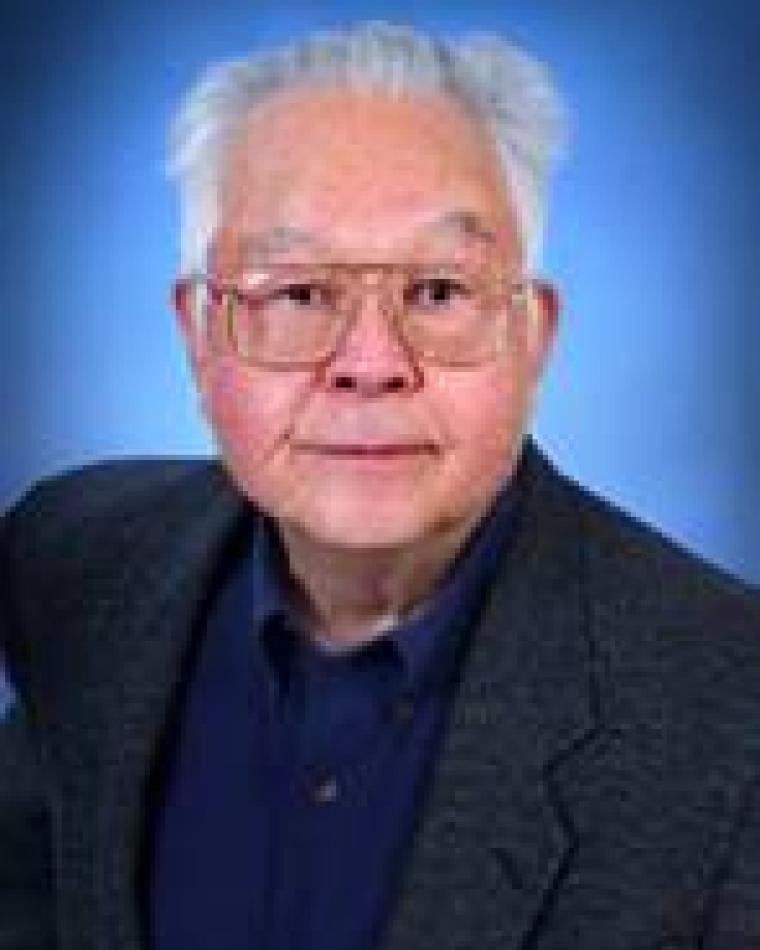
Gen Shirane
Gen Shirane
Contact Menu
Gen Shirane was arguably the world’s foremost expert in the use of triple-axis neutron spectroscopy, which he used to study a broad class of problems in condensed matter physics covering ferroelectricity, magnetism, and high-TCsuperconductivity. One of a truly select few individuals, Gen maintained an intense level of activity far exceeding that of most scientists half his age; indeed, he was in the midst of collaborations with junior scientists on several papers and experiments when he died suddenly from a stroke at the age of 80 on January 16th, 2005. Gen began his career by studying the phase transitions in ferroelectric materials and later moved on to investigate the structure and dynamics of countless magnetic and superconducting materials. His return to the field of ferroelectrics near the end of his life marked a fitting end to a spectacular career that was filled with remarkable discoveries and accomplishments spanning more than half a century. Gen was born in Ashiya, Japan, just west of Kobe in 1924, and he received his Doctor of Science in Physics from the University of Tokyo in 1954. His thesis dealt with ferroelectrics, and his first publication appeared in 1947. Gen had already established an international reputation when he came to the U.S. in 1952 to continue his studies of ferroelectrics with Pepinsky at Penn State University. Gen performed his first neutron diffraction study in 1955 on PbTiO3. Recognizing the power of neutron scattering, Gen moved to Westinghouse Research Laboratories in 1957 to work at their new research reactor. When support for basic research waned at Westinghouse Gen moved on to Brookhaven National Laboratory in 1963. That was his last move. During this period he co-authored a book entitled “Ferroelectric Crystals” with Franco Jona in 1962, which is now considered a classic and is still used extensively by researchers worldwide. When the High Flux Beam Reactor (HFBR) at Brookhaven commenced operations in 1965 Gen turned to neutron inelastic scattering. He studied spin-wave dispersions and critical phenomena in ferromagnets, soft phonon modes and structural phase transitions in ferroelectric perovskites, spin fluctuations in low-dimensional antiferromagnets, electron-phonon coupling in superconducting Nb3Sn, spin waves in chromium, and eventually high-TC superconductors. With the demise of the HFBR in 1999, Gen chose to return to his first love, ferroelectrics, managing an active program of x-ray diffraction experiments at the National Synchrotron Light Source, located just across the street from the HFBR, as well as neutron scattering studies, performed mostly at the NIST Center for Neutron Research. His last area of research, though certainly not his least, was on the structural and dynamical properties of the relaxor ferroelectric systems PMN-xPT and PZN-xPT. If citations are a measure of a scientist’s professional stature, then Gen Shirane was a giant. His unceasing drive and enthusiasm led to the phenomenal output of more than 750 papers, which have garnered nearly 40,000 citations, and an astonishing “h-index” of 103, one of the highest of any physicist in any field. In addition to his classic text “Ferroelectric Crystals,” Gen also coauthored a book on triple-axis neutron spectroscopy in 2002. The profound respect accorded Gen’s research by the physics community is evidenced by his ranking #27 in the list of the “1000 Most Cited Physicists, 1981-1997.” Gen also ranks among the top 300 physicists in the “1,000 Contemporary Scientists Most Cited in 1965-1978.” Yet most impressive of all is the fact that Gen is one of only eight physicists to appear in both of these lists – striking testament to Gen’s sustained scientific excellence over four decades. Gen’s earlier scientific achievements were recognized in 1973 when he was awarded both the Oliver E. Buckley Prize, the most prestigious award in condensed matter science given by the American Physical Society, and the Warren Award, the most prestigious prize bestowed by the American Crystallographic Association. Gen later received his highest honor when he was elected to the U.S. National Academy of Sciences in 1989. Gen was also a recipient of a von Humboldt award (Germany), the DOE Award for Outstanding Scientific Accomplishment in Solid State Physics in 1989, and the Award for Outstanding Accomplishment from the Japanese Society for Neutron Science in 2003. Gen was a fellow of both the American Academy of Arts and Sciences and the American Physical Society. His lofty accolades notwithstanding, Gen’s most lasting accomplishment lies with the generations of scientists that he trained and mentored, many of whom are now international scientific leaders in their own right. Gen enjoyed working with young scientists and was famous for pushing these young researchers extremely hard. Of course, Gen was highly competitive in everything he did, whether it was performing a triple-axis experiment or playing tennis or poker. He would often ask postdoctoral candidates whether or not they played poker during their job interviews, and his eyes would twinkle if they said no, but that they were willing to learn. He kept a copy of “The Education of a Poker Player” by Herbert O. Yardley on hand for just such occasions. Gen is survived by his wife Sakae, well known for her kindness and hospitality while entertaining many Brookhaven visitors at Gen and Sakae’s home in Bellport, NY, and for her love of music and ability to play the piano beautifully. Gen is also survived by his two sons, Haruo and Tatsuo, their wives, and three grandchildren. He will be remembered by his family, friends, and everyone he worked with, each through different memories that define Gen as a man of integrity, a good friend, and one of the greatest scientists in the field of physics and neutron scattering. His passing marks the end of an era. (Contributor: Peter M. Gehring)
